Malagueña salerosa (La malagueña)
___________________________
page originally published on 17 December 2011; latest edit: 27 November 2022
___________________________
Malagueña salerosa — Described as a well-known son huasteco or huapango song from Mexico in the Wikipedia page, the song has also been recorded under the titles “La malagueña” and “Malagueña.” A 17 April 1939 recording of the song by Los Rancheros was issued, under the title “La malagueña,” on the single (Latin) Decca 10419, as the B-side of “Ahora seremos felices.” This is the earliest recording of the song that I’m aware of.
Second Hand Songs and Discogs.com consider the song a traditional, while some sites credit the songwriting to Elpidio Ramírez, Roque Ramírez, and Pedro Galindo. Other sites, including Wikipedia, omit Roque Ramírez and credit only Elpidio Ramírez and Pedro Galindo as the songwriters.*
If Elpidio Ramírez and Pedro Galindo wrote the song (with or without Roque Ramírez as co-songwriter), as some claim, or adapted it from a traditional song, then it remains to be explained why they waited until 1947 to publish the song, given that it had been recorded as early as 1939 by Los Rancheros, with the same words and music used by Galindo, Trío Tamaulipeco, and Elpidio Ramírez in the 1947 film La Malagueña.
_________________
Los Rancheros (aka “Los Murciélagos”) — recorded on 17 April 1939; issued, under the title “La malagueña,” on the single Decca 10419, as the B-side of “Ahora seremos felices”
.
.
from the 1946 Mexican romance drama film Enamorada — I don’t know if the trio had recorded and released the song prior to the recording for the film soundtrack.
.
Trío Calaveras — LP recording, date unknown
.
Pedro Galindo with Trío Tamaulipeco, Elpidio Ramírez (“El Viejo Elpidio,” on violin) and other musicians — from the 1947 film La malagueña, starring Consuelo Frank, Alvarado Crox, Victor Junco, and Pedro Galindo
If Elpidio Ramírez and Pedro Galindo wrote the song (with or without Roque Ramírez as co-songwriter), as some claim, or adapted it from a traditional song, then why did they wait until 1947 to publish the song, given that it had been recorded as early as 1939 by Los Rancheros, with the same words and music used by Galindo, Trío Tamaulipeco, and Elpidio Ramírez in this 1947 film.
presently unavailable
__________________
Irma Vila y su Mariachi — 1947
.
Radio Boys (aka I Radio Boys, apparently an Italian vocal group) — According to discogs.com, a recording of the song under the title Malagueña (Suan husteco) by the Radio Boys, with Pippo Barzizza conducting Orchestra Cetra, was released as the B-side of the Cetra label (Italy) 78 rpm 10″ shellac single Notturno Alpino (Cetra EE 6007, see the label above), on 4 March 1950. However, the label shown in the video has a different catalog number (DC 5086), and both labels credit not Barzizza and Orchestra Cetra, but a different orchestra directed by “M.o M. Migliardi” (Maestro Mario Migliardi?). The green label in the video apparently credits songwriting to “Del Rio – Ramirez,” while the maroon Cetra EE 6007 label credits only “Del Rio” as the songwriter.
.
Luiz Bonfá — recorded in March 1952 and issued on Continental 16.544, with the following performer credits on the label: “LUIZ BONFA Com Vidal – Chiquinho – Teles e Trinca” — The B-side, also included in the video, is “So recordaçào” (Luiz Bonfá), recorded by Luiz Bonfá e Seu Conjunto on 22 August 1951.
- Luiz Bonfá (guitar)
- Chiquinho, aka “Chiquinho do Acordeom” (accordion)
- Vidal (bass?)
- Teles (?)
- Trinca** (percussion?)
- unknown (vocals)
__________________
Claude Robin — issued in 1955 on (Belgium, France) Victory 9812 (and 9812×45), c/w “Ave Maria No Morro”
discography sources:
.
Caterina Valente — 1955?
.
Les Guaranis — issued in 1956 on the EP (France) Barclay 76 009
.
Trio Los Paraguayos — Second Hand Songs dates a single by Trio Los Paraguayos, issued on Philips Ibérica (Italy) P 19619 H, under the title Malagueña, 1956. Discogs.com recognizes the same Italian release, but leaves it undated. No Malagueña single is included in the 45cat.com Los Paraguayos discography. According to 45cat.com and discogs.com, an EP containing the recording was released on the Philips label in various countries including the Netherlands, Spain, Italy, Germany, as well as in the UK and Scandinavia. However, of those for which a date is given, the earliest release date for the EP is 1958 (Netherlands, 45cat.com).
.
Bud & Travis – from their 1959 debut album Bud & Travis
.
Miguel Aceves Mejía — in the film Los cinco halcones (1962) — Mejía also performed the song in multiple other films, and a recording of the song had been released in 1958 on his album El jinete.
.
Trini Lopez — from the 1964 Reprise Records LP The Latin Album (R-6125)
.
Luiz Bonfá — originally released on the 1965 LP The Brazilian Scene, Philips PHS 600-208 — Decades later, the recording was included on the soundtrack album of the 2013 Spanish film Los amantes pasajeros.
.
Esquivel! (Juan García Esquivel) — from the 1966 RCA Victor (Mexico) LP Actual, which was retitled The Genius of Esquivel, with the same eleven tracks in a different order, for 1967 release in the US and Canada
.
Trío Los Condes — from the 1967 LP El Trío Los Condes en Canciones del Ayer, (Puerto Rico) Gema LPG-3033
.
Nancy Ames – 1969
.
Lucha Villa — 1973(?)
.
Los Cantores del Pánuco (aka Trío Los Cantores del Pánuco, Trío Cantores del Pánuco) — from the 1975 album Huapango Huastecos, (Mexico) Cisne C1-1052
Though, except for several lines of the lyric, this “La malagueña” seems only faintly similar to the “La malagueña” featured on this page, the B-side label of the record (see above) credits Pedro Galindo as the songwriter. Recordings of this “La malagueña” by numerous other artists, including multiple versions by Trío Armonía Huasteca, are available on YouTube.
The music and most of the words of this song are quite different than those of the song of the same title featured throughout the rest of this page. What is the relationship of this song to that one? Though otherwise very different, this song does share the following lines with the “La malagueña” of Los Rancheros and Trío Calaveras:
Malagueña salerosa
Besar tus labios quisiera
Besar tus labios quisiera
Malagueña salerosa
Y decirte niña hermosa
Que eres linda y hechicera
Que eres linda y hechicera
Como el candor de una rosa
.
Ramón Vargas accompanied by Trio Madrigal, at the Frida Kahlo Museum in Mexico City on 30 October 2012
.
 ________________________________
________________________________
some lists of recordings of the song (as of 14 May 2018):
- The Strachwitz Frontera Collection of Mexican and Mexican American Recordings — Here are six pages of recordings (uncounted) of the title “La malagueña,” though some of those listed might refer to a different song of the same title.
- At the same website, the page Featured Song: “La malagueña” contains a selection of ten recordings from the Frontera Collection variously listed under the categories “unusual,” “notable,” and “less successful.”
- The post Malagueña Salerosa at the blog “All versions of Some musics” lists about 200 recordings, with most of them evidently available for downloading.
- SecondHandSongs.com — 52 versions listed including recordings of Dutch, Finnish, German, and Swedish adaptations
- Wikipedia — Over 50 artists that have recorded the song are listed, with in some cases the album, EP, film etc. on/in which it was released and the year of release also given.
- The page La malagueña (canción de Los Rancheros) at Música Wiki (http://es.musica.wikia.com) includes the lyric in Spanish and a list of 34 artists who have recorded the song, in some cases providing also the year of the recording.
______________________________
* Regarding the song’s authorship, Wikipedia says,
Malagueña Salerosa is attributed to Elpidio Ramírez[2] and Pedro Galindo,[3] published by Peer International in 1947[4] (monitored by BMI), although Mexican composer Nicandro Castillo[5] questions the validity of that authorship.[6] As he mentions:
Composer don Nicandro [Castillo] wrote that several tunes from la Huasteca which were known as huapango songs composed by Elpidio Ramírez, Roque Ramírez and Pedro Galindo, were actually anonymous songs, as was the case of Cielito Lindo (Son Huasteco) and La Malagueña, which in reality, like La Guasanga or El Sacamandú, were known many years before, and should be part of the public domain.
The Wikipedia article contains a misattribution, as it appears to have Nicandro Castillo quoting himself in the third person. However, footnote 6 in the article leads to a resolution of the confusion. The “quote” is actually a paraphrasing, translated from the original Spanish, of a paragraph in a piece by Ángel Trejo that was published at the official Conaculta website.
Update, 2016-03-22: The site previously known as Conaculta has apparently been retitled “Cultura,” or (long version) “Secretaría de Cultura.” I do not presently find the Trejo article at Conaculta/Cultura, but it is archived by the Internet Archive Wayback Machine, here:
The original paragraph, in the Ángel Trejo article, from which the above “quote” is derived:
El tema es controvertido porque en dichas páginas don Nicandro escribió que varios sones huastecos que en las décadas pasadas fueron conocidos como huapangos compuestos por Elpidio Ramírez, Roque Ramírez y Pedro Galindo fueron en realidad sones anónimos -como fue el caso de Cielito Lindo y La Malagueña, que al igual que La Guasanga o El Sacamandú, eran del dominio público- escritos [sic] mucho antes “que se construyera la Catedral de Huejutla”.
The above paragraph refers to the paragraph immediately preceding it in the Trejo article, which mentions autobiographical notes written by Nicandro Castillo that, according to a book dedicated to Castillo written by Rivas Paniagua, clarify the origins of “several old huastecos sones.”
For unexplained reasons, SecondHandSongs.com lists a song titled “Malagueña” written by Elpidio Ramírez, Pedro Galindo, as an adaptation of the traditional song that has been recorded under various titles including Malagueña salerosa, La Malagueña, and Malagueña.
If Elpidio Ramírez and Pedro Galindo wrote the song (with or without Roque Ramírez as co-songwriter), as some claim, or adapted it from a traditional, then it remains to be explained why they waited until 1947 to publish the song, given that it had been recorded as early as 1939 by Los Rancheros, with the same music and words used by Galindo with Trío Tamaulipeco and Elpidio Ramírez eight years later in the 1947 film La malagueña.
** I don’t know if they are the same two, but “Vidal” and “Trinca,” playing bass and drums respectively, are credited on various 1950s recordings by Dick Farney, Lúcio Alves, and Baden Powell.





















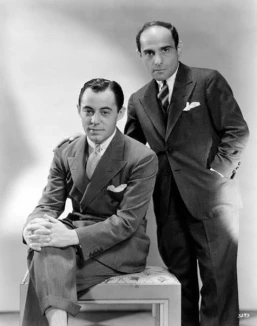

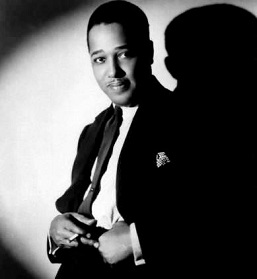



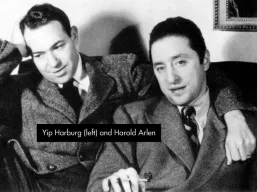
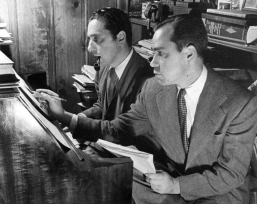



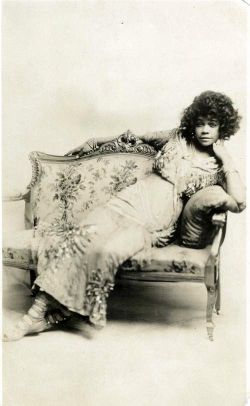





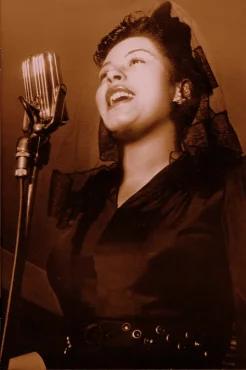




Aug 31, 2017 @ 14:35:39
LikeLike
Oct 07, 2017 @ 08:49:25
LikeLike